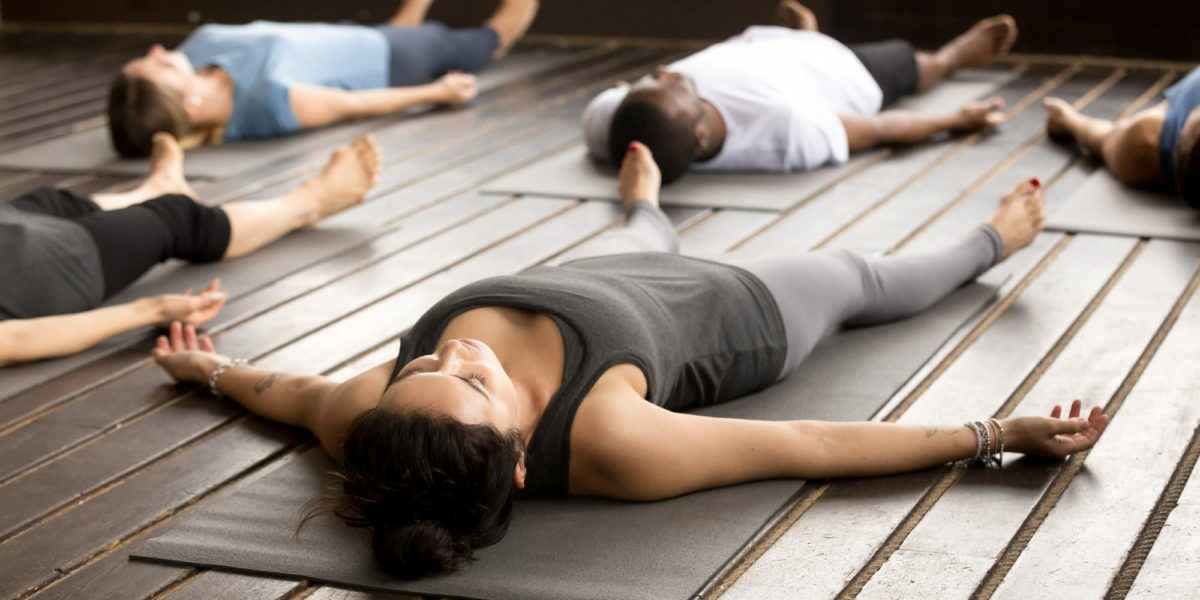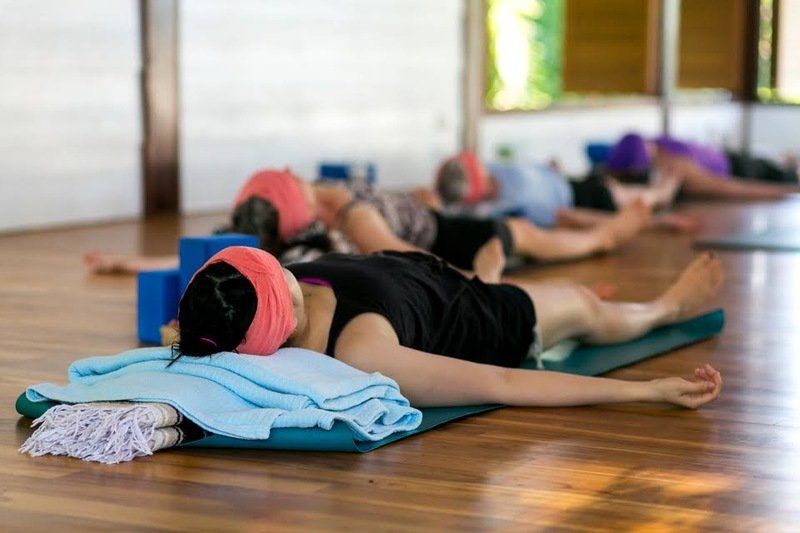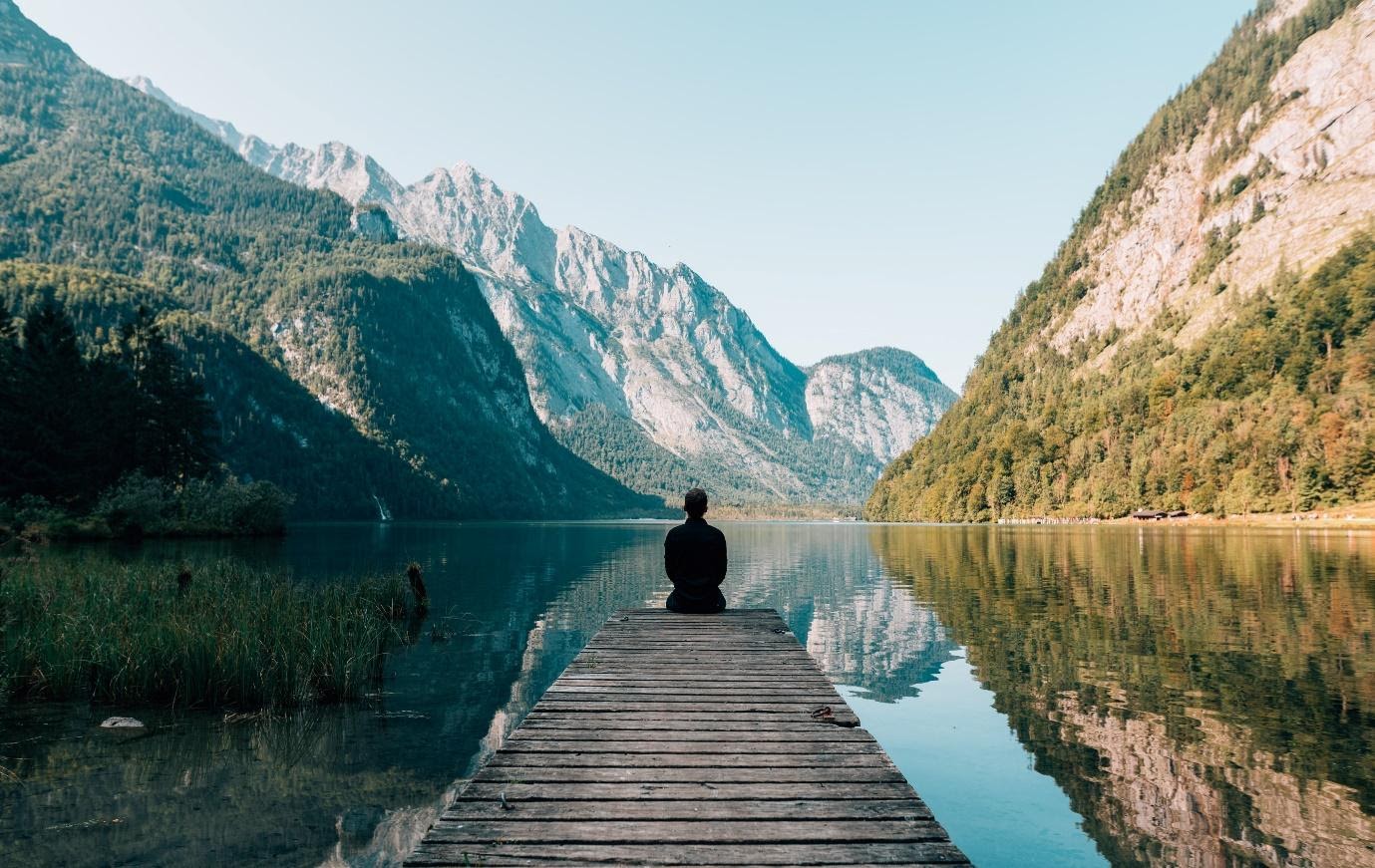Yoga Nidra is becoming a very popular topic because of its restorative effects. And while everyone recognizes the benefits of sleep and rest, at times, these two words are not taken seriously.
Although we have the best intentions to sleep better, to get those golden eight hours of sleep, we so often hear about, that is not always the reality that we experience.
Being caught up in the nine-to-five lifestyles of modern-day existence, we do not leave ourselves sufficient time to rest.
Work, social life, family, travel, hobbies. As this list expands and sleeps time is reduced, it will sweep us up in a whirlwind of mood disorders.
The time we prioritize for rest gets pushed to the sidelines. Our sleep reduced to a pea-sized screw in the cog of our daily routines.
Not to mention, we also lose sleep quality when we anesthetize ourselves with phone screens, alcohol, legal or questionable pharmaceuticals… Losing out on the processes that happen during REM (Rapid Eye Movement) sleep and restorative sleep can cost us a lot more than a few hours from our schedules.
Your Sleep Cycle Explained
Sleep is valuable. Yet, it is quite a misconception that everybody needs 8 hours of sleep to make sure we don’t start acting like ‘apocalypse now’. Or worse. Like ‘planet of the apes, the remake’ – where the apes are sleep-deprived adults who like to throw things at others in the hope of being left in peace.
People’s needs vary and so do sleep times. Someone may only need 5 or 6 hours, whereas others require 9 or more.
The cycles of sleep are really important.
Each of these sleep cycles prevents the aforementioned apocalypse of the socially acceptable self from happening.
Generally speaking, there are four stages, sleep cycles.
Stage 1
The first stage of light sleep gets us ready for regenerative sleep. We start to change over from wakefulness to sleep state in stage one. What we know as dozing off.
Stage 2
We continue to doze off and still can be awakened fairly easily. What follows in stage two is the slowing down of our heart rate and breathing, brain waves calm, and muscles relax.
Stage 3
Next comes the deep sleep that we need to feel revitalized the next day, also known as restorative or regenerative sleep.
Stage 4
Finally, we have REM (Rapid Eye Movement) during deep sleep, the time of the night when we dream. This stage usually takes place 90 minutes past our bedtime.
And then, the cycles repeat until we wake up. Just like the washing machine cycles, our sleep is ready to clean out all the dirt gathered throughout the day. Add some water and detergent, wash, rinse, and then ready to take us for a spin all over again.
Going through the gentle flow of these cycles is how we sleep better.
REM Sleep and Its Effects on Your Mental Health
Nowadays, more people report that they struggle to fall asleep fast. This results in insomnia and frantic, late-night searches for ways to fall asleep faster.
We try all sorts of sleep remedies. From the sound of rain meditations to overdosing on camomile tea. As a result, we miss out on crucial cycles that our body needs to regenerate itself.
During REM sleep:
– Our body repairs muscles and damaged body tissues from all the object throwing at annoyances in our vicinity.
– Our brain takes the opportunity to stimulate and develop cells, so that we are more like the planet of the wise owls, or friendly dogs at least, rather than apes.
– And, of course, we accumulate energy for conquering the world the next day.
Not to mention – dreams. Whether we remember them or not, there are also dreams.
While dreaming in REM sleep, we visualize our desires better. Problem-solving and resolving inner conflicts also take place.
Dreams shed light on what we don’t want to face, and on issues, we don’t have the emotional space to think about in our waking life. Dreams even allow for new perspectives to seep their way into the conventional thinking of everyday consciousness.
One example of the latter is the eureka-esque dream of the German scientist, August Kekule. This is a story shared in the scientific world of how the molecular structure of benzene was discovered.
In a state between wakefulness and sleep, dozing off by the fire in his home, Kekule dreamed of a snake that took its tail into its mouth. This reverie led him to realize that the molecules are not made up in a linear form but in a ring.
One way of receiving the benefits from the REM stage is to introduce the practice of Yoga Nidra, also known as Yogic Sleep.
Yoga Nidra – The Key to Better Sleep
Unfortunately, problem-solving dreams do not happen very often. We can’t even remember most of them, but we don’t necessarily have to be fast asleep, in bed, to reach that dream-like state.
Regardless of whether we remember dreams or not, REM and deep sleep states have an impact on our psyche. But what if we are unable to get into this deep sleep state? How can we reap the same benefits Kekule experienced?
Practicing Yoga Nidra before you sleep is the answer to sleeping better. During normal REM sleep, we unconsciously respond to what happens in our dreams. Whereas, in Yoga Nidra, we can take full conscious control of the REM process.
What else happens while we dream in REM?
When we dream, we are not caged in by our rational minds. This means our dreams can also provide clarity into situations as well as our emotional states.
The brain further organizes what we learned in the day. It also processes new information and categorizes memories.
Whether you’re being chased by a herd of purple elephants or having a tea party with a tree that went to Stanford, there is sense to be made from all of this. We just need to put aside our day-walker glasses and look at things through the dream lens.
How to Sleep Better and in Shorter Time
You may have already heard this phrase from the French philosopher Descartes – “I think therefore I am”. Well, in yoga, we believe that – ‘when I stop thinking, then I really am.’
Even if we prioritize sleep, sometimes, we can find it difficult to clear the mind and to actually fall asleep.
This could be due to a loop of errands running through our minds. A memory of something stupid we said 10 years ago randomly jumps to the forefront of our mind’s eye. We toss and turn for hours, unable to let go.
When we let our bodies relax and allow our mind to listen, we not only surrender to the limitless possibilities but also become more ourselves – balanced, harmonic, serene. Yoga Nidra or ‘yogic sleep’ can get us into this deep state in a shorter time.
Doing around 30 minutes of Yoga Nidra is equivalent to 4 hours of sleep. This practice can either help you get to sleep quicker at night, or give you a much-needed break in the day.
Of course, it is not a replacement for sleep. It is, though, a way to breathe new life into ourselves, open up the unconscious, all while being in a state of deep relaxation.
Visualization and Dreaming – Yoga Nidra vs. REM Sleep
Sleeping is part of our inner space and dreams can serve as manifestations of our innermost desires. But sleep isn’t the only time we can use to physically restore, resolve problems and manifest.
As we practice Yoga Nidra, we set a conscious intention before entering a dream-like meditation state. Resulting in not only amplifying our manifestation while also strengthening our visualization techniques.
Dreams have the ability to influence who we are as people. It is no surprise that lack of sleep is noticeable. We can see it in our physical appearance and reactions, but it also chips away at our mental wellness.
People with sleep deprivation even start to look like they have lost their dreams. Sleep disorders can make us seem zombie-like, aimless beings with no real awareness of why we are doing what we are doing.
At its most basic level, Yoga Nidra will benefit you in the form of relaxation and stress release. That is, if falling asleep fast comes as a bit of struggle to you some days. At the most profound, it will lead to real positive changes in our lives and in understanding oneself.
Sleep to Wake Up
Sleep should not be cast aside as having a lesser significance than being awake. The practice of Yoga Nidra can help induce real understanding of the self.
You will no longer be influenced by temperamental feelings and unpredictable emotions. No matter what the state of your consciousness is – deep sleep, dreaming, waking life.
Learning to be awake to our true self brings us closer to unleashing our full, divine potential.
– “In Yoga Nidra, we go to sleep to wake up”. – Tracee Stanley
Make your dreams a conscious reality by joining our Yoga Nidra online course at Blue Osa . Be awake to the possibilities of your sleep.












